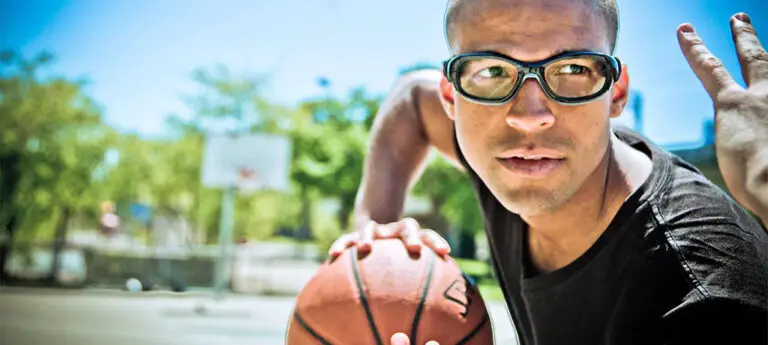Is Horse Riding a Sport? Discover the Thrilling Agility and Skill Involved

Yes, horse riding is considered a sport due to its physical and competitive nature. As a popular recreational activity, horseback riding demands physical strength, balance, and coordination.
Competitions such as show jumping, dressage, and rodeo emphasize the competitive aspect of the sport, requiring riders to display their skills and form. Furthermore, the rigorous training and dedication involved in horse riding make it a highly competitive and challenging sport, appealing to both athletes and spectators.
The physical demands and the competitive nature of the sport make it an undeniable addition to the world of athletic endeavors. Whether engaging in casual riding or pursuing competitive events, horseback riding stands as a recognized sport that warrants both skill and strength. This article will explore the physical requirements, competitive aspects, and the growing popularity of horse riding as a sport.
HISTORY OF HORSE RIDING
Throughout history, horse riding has played a significant role as both a transportation method and a form of recreation. The history of horse riding dates back many centuries and has evolved into a competitive sport enjoyed by millions around the world today.
ORIGINS OF HORSEBACK RIDING
Horseback riding traces its origins to early human civilizations, where horses were first domesticated for agricultural and military purposes. The bond between humans and horses grew, leading to the use of horses for riding and transportation.
- Horses provided speed and mobility in ancient times.
- Nomadic tribes used horses for traveling long distances.
- Cavalry units utilized horses for combat advantages.
EVOLUTION AS A COMPETITIVE ACTIVITY
Over time, horse riding transformed from a mere means of transportation to a competitive activity. Equestrian sports emerged as challenges of skill and athleticism.
- Medieval tournaments featured jousting and mounted combat.
- Modern horse riding competitions include dressage, show jumping, and eventing.

PHYSICAL DEMANDS
Horse riding is a physically demanding activity that requires strength, balance, and coordination. The sport involves a range of physical demands that can challenge riders at various levels of skill and ability.
STRENGTH AND STAMINA
Horse riding requires significant strength and stamina to maintain control of the horse and endure long periods of physical exertion. Riders must have the upper body strength to guide and control the horse, especially when performing maneuvers such as jumping or galloping. In addition, the stamina to endure extended periods of riding is essential for both recreational and competitive riders.
BALANCE AND COORDINATION
Balance and coordination are crucial aspects of horse riding. Riders must maintain their balance while the horse is in motion, making adjustments to their posture and position to remain stable in the saddle. Furthermore, coordination is essential for communicating with the horse through physical cues, such as leg pressure and hand movements, to guide the horse effectively.
EQUIPMENT AND GEAR
Horse riding is not only a popular recreational activity, but it is also an intense and physically demanding sport. To engage in this sport, riders require certain equipment and gear. Let’s explore the essential items needed for horse riding:
SADDLE AND BRIDLE
One of the most critical pieces of equipment for horse riding is the saddle. This is where the rider sits and it provides stability and comfort while riding. There are various types of saddles, such as English, Western, and endurance, each designed for different disciplines within horse riding.
The bridle is another essential piece of equipment that consists of the headgear and reins. It is crucial for riders to have proper control over the horse, and the bridle plays a significant role in achieving this.
SAFETY EQUIPMENT
When it comes to horse riding, safety should always be a top priority. Helmets are a fundamental piece of safety gear, designed to protect the rider’s head in the event of a fall or collision. Additionally, riding boots provide ankle support and prevent the foot from slipping through the stirrup, ensuring the rider’s safety.
Other safety equipment includes body protectors and riding gloves, which offer added protection against potential injuries while riding.
COMPETITIVE ASPECTS
Competitive aspects of horse riding highlight its status as a sport where riders strive for excellence in various events and competitions. Let’s delve into the Olympic Recognition, Championships, and Tournaments that showcase the competitive nature of horse riding.
OLYMPIC RECOGNITION
Horse riding has Olympic recognition, featuring disciplines like dressage, show jumping, and eventing in equestrian events. Riders from around the world compete on this prestigious stage, aiming for the highest honor in the sport.
CHAMPIONSHIPS AND TOURNAMENTS
Various championships and tournaments in horse riding attract skilled riders vying for top positions. Events such as the FEI World Equestrian Games and national championships offer opportunities for riders to showcase their talent and compete at the highest level.

TRAINING AND SKILL DEVELOPMENT
Horse riding involves physical training and skill development, requiring coordination and balance as riders navigate the course. The debate continues on whether horse riding should be classified solely as a sport.
PROFESSIONAL COACHING
Horse riding requires professional coaching to develop the necessary skills and techniques. Whether you are a beginner or an experienced rider, getting guidance from a qualified coach is essential.
- Professional coaching helps riders understand the basics of horse riding and equips them with the correct form and posture.
- Coaches teach riders how to communicate effectively with their horses through leg aids, rein techniques, and body language.
- They also focus on improving the rider’s balance, coordination, and core strength.
Good coaching ensures that riders are aware of the potential risks involved in horse riding and know how to handle unforeseen situations.
SKILL PROGRESSION
Horse riding is not just about sitting on a horse and going for a ride. It is a sport that requires continuous skill development and progression.
- Riders start with the basics, such as learning how to mount and dismount a horse, hold the reins correctly, and maintain a balanced seat.
- As their skills improve, they move on to more advanced techniques, such as jumping over obstacles, performing dressage movements, or competing in endurance rides.
- Each stage of skill progression builds on the foundation of the previous one, allowing riders to continually challenge themselves and strive for improvement.
Regular practice and consistent training are vital for riders to enhance their skills and reach their full potential in this demanding sport.
DEBUNKING MYTHS
Debunking myths about horse riding as a sport, it’s essential to recognize the intense physical demands and competitive nature involved. From dressage to show jumping, equestrian activities require athleticism, skill, and rigorous training regimens, firmly establishing horse riding as a legitimate sport.
CASUAL LEISURE ACTIVITY VS. SPORT
Many people perceive horse riding as a casual leisure activity, but in reality, it is a highly competitive and physically demanding sport. Horse riding involves a combination of strength, balance, and coordination. Riders need to have a deep understanding of their horse’s behavior and possess excellent riding skills to perform well in various disciplines such as show jumping, dressage, and eventing.
MISCONCEPTIONS ABOUT HORSE RIDING
Despite its classification as a sport, there are still misconceptions surrounding horse riding. Let’s address some of these myths and shed light on the truth behind them:
MYTH: HORSE RIDING DOESN’T REQUIRE ATHLETIC ABILITY.
Contrary to popular belief, horse riding is not a passive activity. It demands a significant amount of physical strength, balance, and core stability. Riders must maintain their balance while navigating obstacles and perform precise movements to communicate effectively with their horses.
MYTH: HORSES DO ALL THE WORK; RIDERS JUST SIT THERE.
While it may seem like riders are merely sitting on the horse, they actively engage their muscles to maintain proper posture, stability, and control. Riding requires riders to use their legs, hips, and arms to communicate cues to the horse and maintain a centered balance.
MYTH: HORSE RIDING IS NOT AS INTENSE AS OTHER SPORTS.
Horse riding can be as intense as any other sport. Riders experience a range of physical exertion, from gentle trotting to high-speed galloping and performing complex maneuvers. Endurance, stamina, and focus are essential to handle the challenges presented by both competing and training.
MYTH: IT’S ALL ABOUT THE HORSE, NOT THE RIDER’S ABILITIES.
While horses play a significant role in horse riding, the rider’s skills and abilities greatly impact their performance. A skilled rider can bring out the best in their horse, effectively guiding them through various exercises and maneuvers. The rider’s understanding of horse behavior and training techniques contributes to the successful execution of movements and overall performance.
MYTH: HORSE RIDING DOESN’T REQUIRE TEAMWORK.
Horse riding is not just an individual sport; it involves a unique partnership between the rider and the horse. Successful horse riding requires the establishment of trust and effective communication between both parties. Riders need to develop a bond with their horse, learning their preferences and adapting their strategies accordingly.
MYTH: HORSE RIDING DOESN’T REQUIRE MENTAL FOCUS.
Mental focus is crucial in horse riding. Riders need to analyze and respond to their horse’s behavior, make quick decisions during competitions, and anticipate potential obstacles or challenges. Riding also requires riders to stay calm under pressure and maintain concentration throughout long training sessions and competitive events.
FREQUENTLY ASKED QUESTIONS ON (IS HORSE RIDING A SPORT)
IS HORSE RIDING CONSIDERED A SPORT?
Yes, horse riding is considered a sport as it requires physical skill, competition, and training.
WHAT ARE THE BENEFITS OF HORSE RIDING?
Horse riding offers numerous benefits such as improved balance, strength, coordination, and a sense of freedom and connection with animals.
CAN HORSE RIDING HELP WITH FITNESS?
Yes, horse riding is a great way to stay fit as it engages various muscle groups, improves cardiovascular health, and increases flexibility and stamina.
IS HORSE RIDING SUITABLE FOR ALL AGES?
Horse riding can be enjoyed by people of all ages, provided they have proper training, supervision, and physical fitness level to engage in this activity safely.
CONCLUSION
In essence, horse riding embodies the essence of a competitive sport. Through physical exertion and teamwork with the horse, riders hone skills that mirror those of traditional athletes. The diverse training and demanding nature of horse riding unequivocally position it as a legitimate sport in the athletic arena.






